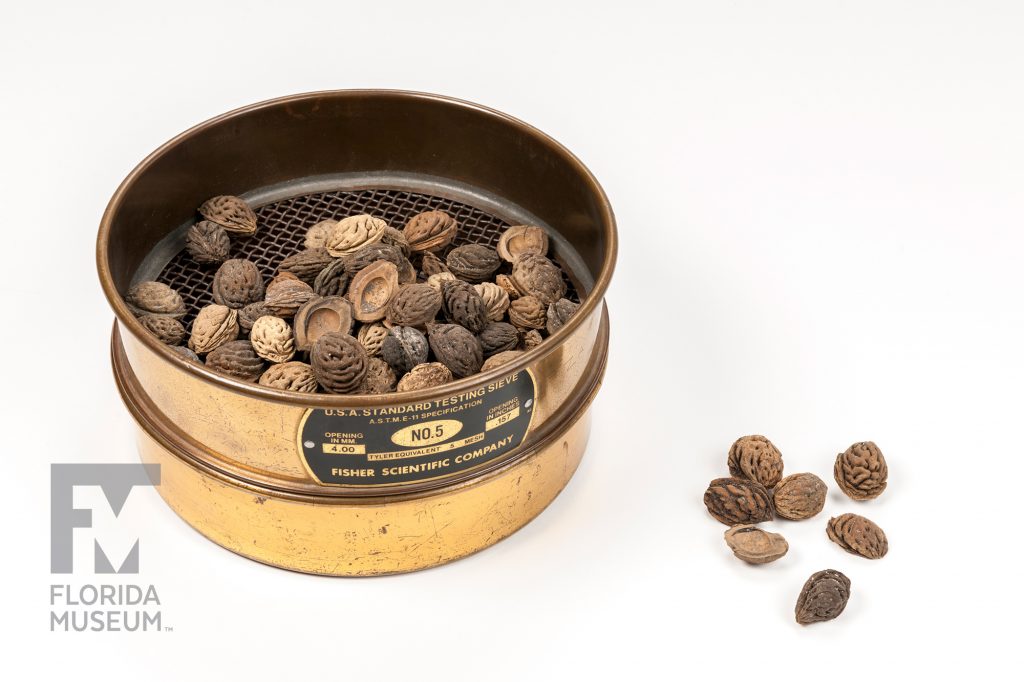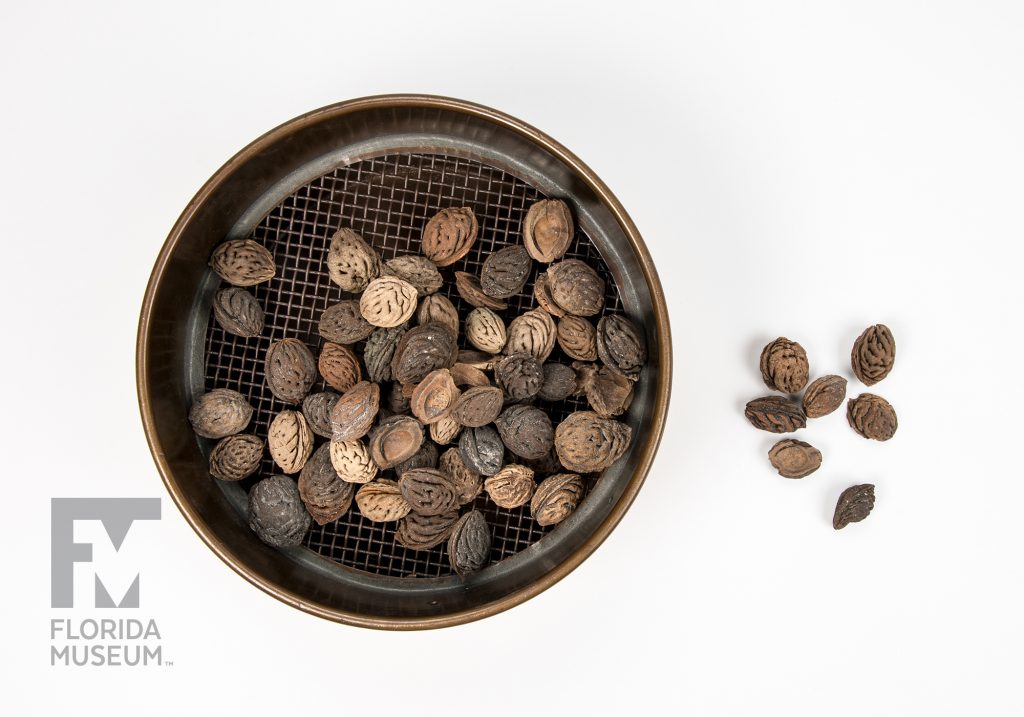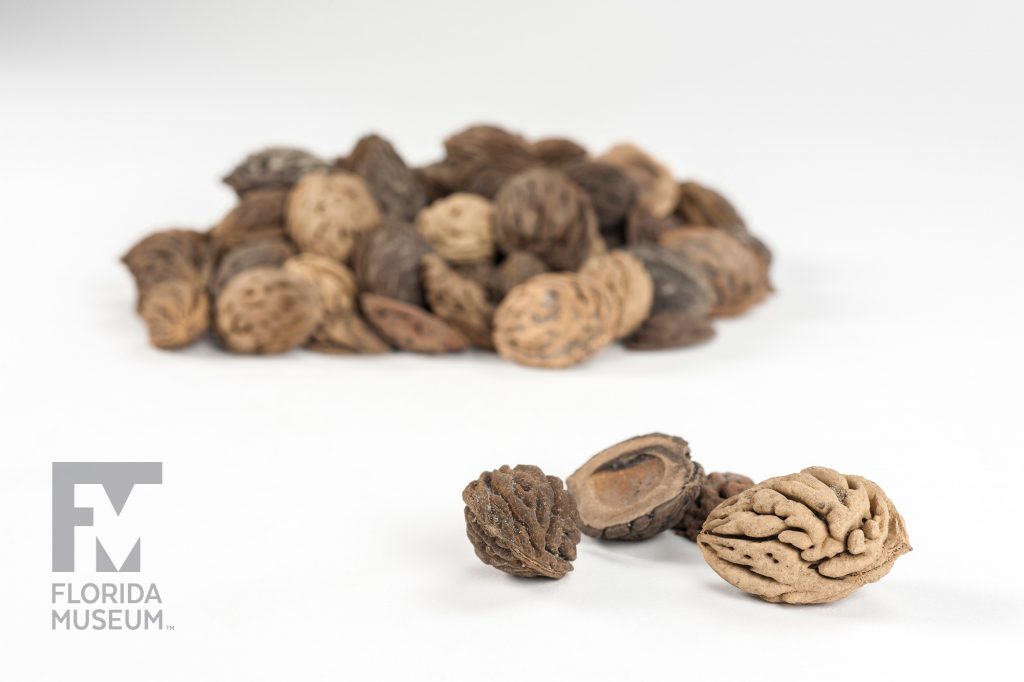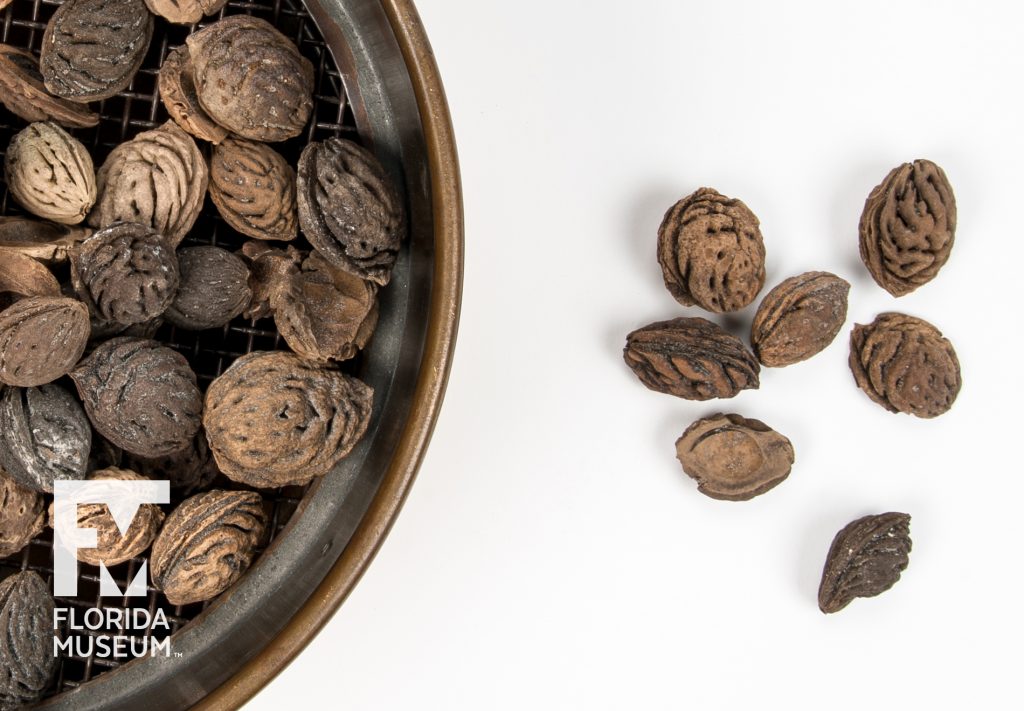Spaniards introduced many new plants to the Americas. Peaches adapted easily and spread rapidly across the Southeast once adopted by Native Americans. Within 150 years, European naturalists thought peaches were native to Georgia.
Summary
Peach pits (Prunus persica)
From Columbia Co., Florida
Dates to 16th century
Collection
Story
These few peach stones literally represent the hundreds and hundreds of peaches that were recovered from this rare archaeological find – along with other artifacts – from the Fig Springs site in Columbia County, which is the Spanish Mission of San Martin de Timucua. These were excavated by John Goggin, an archaeologist, back in the 1950s.
They survived, in part, in the archaeological record because they are more robust than most seeds, not the edible portion of the fruit, and most importantly because they were deposited in a wet, anaerobic environment preventing them from decay and microbial activity.
Interestingly, Prunus persica, the scientific name for peaches, have their origin in northern China dating some 4,000 to 5,000 years ago. They arrived in the Americas with the earliest explorers and into La Florida with Pedro Menendez de Aviles. Peaches were adopted from the start by Native Americans who were reported to have dried and stored them like persimmons and plums. They also adapted readily to the climate and soil conditions and spread throughout the southeast and have been found at most mission sites across La Florida and at early Spanish sites as far west as the Mississippi. So much so that by the 1800s naturalists such as Larson and the Bartram’s believed the peach orchards they encountered in Georgia were native to America.
The peach is among the many examples of the “seeds of change” that impacted the Western Hemisphere as it was rapidly and vastly transformed biologically and culturally by such introductions.
Donna Ruhl
Collections Manager, Florida Archaeology & Bioarchaeology*
Archaobotanist, Environmental Archaeology*
Florida Museum of Natural History
Exhibit
On display Sept. 23, 2017-Jan. 7, 2018, Rare, Beautiful & Fascinating: 100 Years @FloridaMuseum celebrated the Museum’s rich history. Each Museum collection was asked to contribute its most interesting items and share the stories that make them special. Though the physical exhibit is closed, this companion website remains online, providing an opportunity to experience the Florida Museum’s most treasured specimens.
Exhibit Area: Objects Tell Stores
Theme: Spanish Colonial Archaeology
 Want to see more? Explore more than 300 breathtaking color photos of plants, animals, fossils and cultural heritage materials from the Florida Museum of Natural History’s collections in the award-winning book All Things Beautiful available from the University Press of Florida.
Want to see more? Explore more than 300 breathtaking color photos of plants, animals, fossils and cultural heritage materials from the Florida Museum of Natural History’s collections in the award-winning book All Things Beautiful available from the University Press of Florida.
*This title was accurate at the time the exhibit was on display in 2017. Please visit the collection website to verify current staff and student information.




